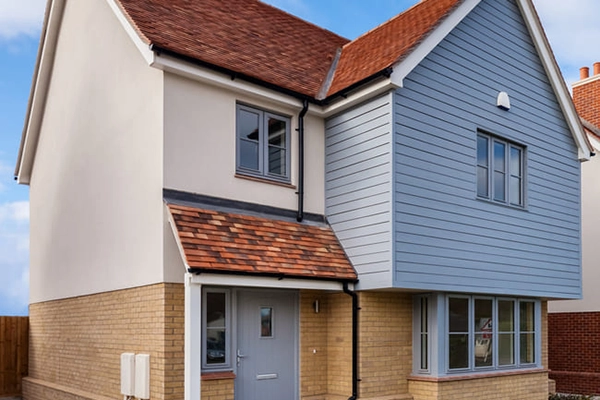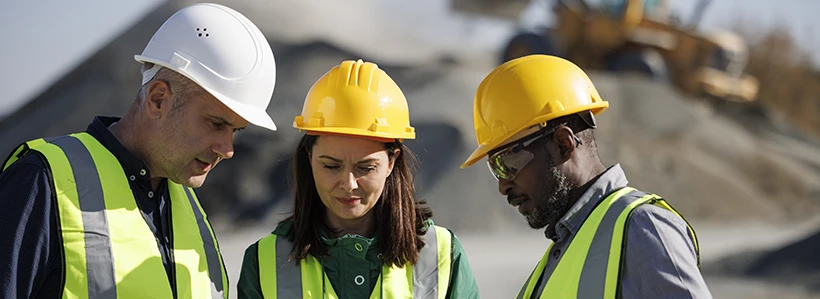
According to the UK Health Security Agency, radon is responsible for over 1,100 lung cancer deaths each year in the UK. As a leading cause of lung cancer, it is vital to understand and implement effective radon protection measures.
UK Building Regulations mandate radon control measures for new buildings and extensions in high-risk areas. These measures help manage radon levels and ensure healthy indoor air quality. Adhering to these regulations is crucial for reducing health risks and protecting building occupants from radon.
All stakeholders, including project design teams, developers, architectural technicians, and other construction professionals, must follow these requirements to ensure that radon protection is built into construction practices.
Michael Jaggs, Principal Trainer at BRE Academy and co-author of key UK radon protection guidelines, explains that “Raising awareness of radon among those involved in designing and constructing new builds is essential, as protective measures can help prevent harmful exposure to radon from the start”.
Understanding radon and its impact
Radon is a radioactive gas that occurs naturally from the decay of uranium in ordinary surface rocks and soil. It is primarily produced in igneous and metamorphic rocks, such as granite and basalt, as well as in sedimentary rocks like shale and limestone, where uranium and other radioactive elements are present.
As these rocks break down, radon gas is released and can migrate through the ground. While much of the radon disperses into the outside air, where levels are typically low, some can enter buildings through cracks in foundations, floors, or walls. Once inside, radon can accumulate to higher levels, especially in enclosed spaces like basements and lower levels of buildings.
Prolonged exposure to elevated radon levels poses significant risks to people’s health and wellbeing. Radiation from radon’s particles damages lung tissue and may cause lung cancer. The longer the period of exposure, and the higher the level of radon, the greater the risk will be, especially for smokers and ex-smokers.
Where in the UK is radon most prevalent?
The type of rock and soil underneath a building help determine whether the risk of radon is higher.
The UK Health Security Agency’s interactive radon map, last updated in December 2022, shows which areas are most affected by radon in the United Kingdom. The map is the product of years of analysis and research, with data taken from radon monitoring carried out at properties combined with geological insight from the British Geological Survey (BGS).
UKHSA’s map shows the Southwest of England and Wales to be some of the most at-risk areas. Much of Cornwall, for instance, is designated as a radon-affected area, due to the granite in its landscape producing the radioactive gas more rapidly than other types of rocks. Radon can also be found in other countries, including the US, Germany, and Sweden.
The UKHSA radon map is a crucial tool for assessing property risk, used by councils, landlords, homeowners, and employers. It also informs UK Building Regulations on where to incorporate radon protection in new buildings.
While every building contains radon, the levels are usually low. The concentration of radon inside buildings depends on many factors, including the local geology and the radon exhalation from building materials. It also depends on the rate of exchange between outdoor and indoor air, which is influenced by the airtightness and construction of the building. Basements, cellars or underground sites (i.e., low-lying areas that are closer to the ground), are more likely to have high radon levels, regardless of their geographical location.
What are radon action and target levels?
Radon levels are measured in becquerels per cubic meter (Bq/m³), which indicates the radioactivity of radon gas in a given volume of air.
Radon action and target levels are thresholds set by the UKHSA to manage radon exposure in buildings.
In the UK, the Health Security Agency has set the action level at 200 Bq/m³, meaning if indoor radon levels exceed this, measures should be taken to reduce it.
The target level is 100 Bq/m³, a lower threshold that represents the ideal maximum concentration to ensure safety.
Both levels help protect against the health risks associated with prolonged radon exposure, including lung cancer, and are based on international guidelines, such as those from the World Health Organization (WHO).

How do UK Building Regulations address radon protection?
Radon protection regulations for new buildings and extensions in the UK are outlined in the Building Regulations 2010 and associated Approved Documents. Specifically, Approved Document C (Site preparation and resistance to contaminants and moisture) provides guidance on radon control measures.
The requirements are detailed further in the Radon: Guidance on Protective Measures for New Buildings document, which offers comprehensive advice on implementing radon protection.
Radon protection measures in new builds
When new buildings are constructed or extensions are added to existing ones in high radon areas, UK Building Regulations require protective measures. This is to ensure that buildings are designed to minimise radon exposure and protect occupants’ health.
The extent of the measures is guided by the UKHSA radon map. The level of protection – ranging from no measures to basic or full protective measures – depends on the probability of high radon levels.
Basic radon protection is a continuous, damp-proof membrane that covers the footprint of the building, modified and extended to form a gas-tight barrier between the building and the ground.
For areas where there is an elevated radon risk, full radon protection is needed. This consists of a radon membrane across the footprint of the building supplemented by provision for subfloor depressurisation or ventilation (either a radon sump or a ventilated subfloor void).
Protective measures do not completely stop the entry of radon into a building; however, they help reduce ingress to acceptable levels.
Michael Jaggs explains that “While radon protection measures may not eliminate all exposure, they are key to significantly reducing the risk of harmful radon levels in new builds. These measures must be well designed and properly installed to ensure their effectiveness.”
Do new buildings require radon testing?
UK Building Regulations do not require radon testing on newly completed dwellings or non-dwellings.
Public Health England (PHE), however, recommends that radon testing should be carried out when dwellings are occupied. This is to ensure that that radon concentrations are below the levels that require action.
If a radon test result is higher than the action level and full protection is built in, additional measures may be used to reduce radon levels further.
